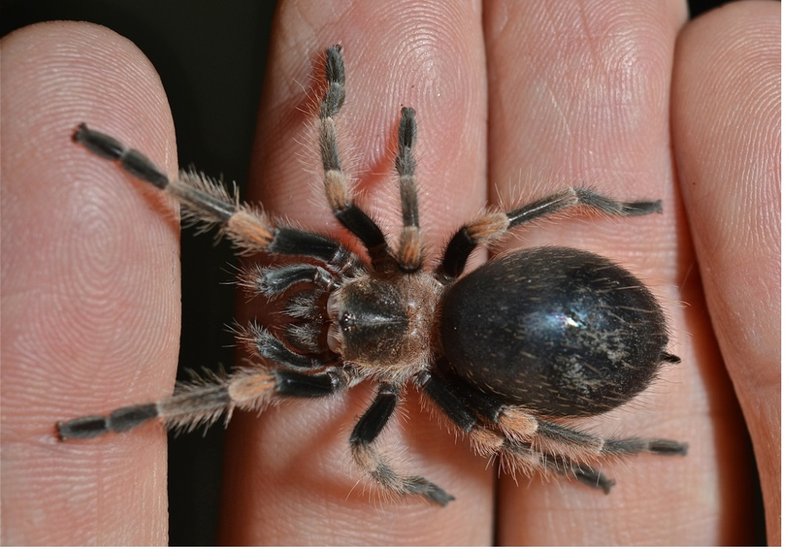
If you’re a tarantula owner or considering getting one as a pet, understanding the molting process is crucial. It’s not just about watching your eight-legged friend go through this change—knowing the signs and stages can help you provide better care. So, grab your coffee, and let’s dive into the world of tarantula molting!
What Is Tarantula Molting?
Tarantula molting, also known as ecdysis, is a natural process where these spiders shed their exoskeleton to allow for growth. Since they have a hard outer shell, they can’t grow as they do. Instead, they must *completely* remove their old skin. It’s a bit like how we might outgrow clothes; once they get too tight, it’s time for new ones!
The molting process is vital not just for growth but also for repairing injuries and maintaining their overall health. During molting, they can regenerate lost limbs too! It’s a risky time for the spider, as they’re vulnerable until their new exoskeleton hardens. This stage can last from a few hours to several days, depending on the species and environmental conditions.
Recognizing the Signs of Molting
You might be wondering how to tell if your tarantula is about to molt. Here are a few key signs:
- Behavior Changes: Your tarantula might become less active, hiding more than usual. It’s like they’re preparing for a big transformation.
- Food Refusal: They often stop eating days or even weeks before molting. It’s a way for their bodies to conserve energy for the process.
- Webbing: Some tarantulas will spin a web mat or retreat into their burrow, creating a safe space for the big change.
- Color Fading: Their coloration might dull, making them look a bit washed out. This is a sign that they’re ready to shed their old skin.
If you see these signs, it’s important to leave your tarantula alone. They need their privacy to go through this process. Imagine trying to take a nap while someone keeps poking you—it wouldn’t be pleasant, right?
The Stages of Molting
The molting process consists of several stages, each with its own unique characteristics:
1. Pre-Molt: This is when your tarantula shows the signs we just discussed. They’re getting ready for the big change and will become less active.
2. Ecdysis: This is the actual shedding of the exoskeleton. The tarantula will typically flip onto its back and push its old skin off. It’s a delicate process, and they can take several hours to several days to fully shed.
3. Post-Molt: After shedding, the new exoskeleton is soft and vulnerable. Your tarantula will often stay hidden while it hardens. This stage can last anywhere from a few hours to a week, depending on the species and environmental conditions.
4. Recovery: Once the new exoskeleton has hardened, your tarantula will gradually start moving around and may even show an appetite again. They will look brighter and larger, a clear sign that the molting was successful!
Each stage requires different care and attention, so it’s good to be aware of what’s happening with your pet.
How to Care for Your Tarantula During Molting
Caring for a tarantula during its molting phase is essential for a smooth transition. Here are a few tips to help you out:
- Maintain Humidity: Keeping the humidity level steady is crucial. A humid environment helps soften the exoskeleton, making it easier for the tarantula to shed.
- Avoid Handling: It’s tempting to check in on them, but resist the urge to handle your tarantula during this period. They’re vulnerable and need peace.
- Provide a Safe Space: Ensure your tank has hiding spots, decorations, or burrows where your tarantula can feel secure while molting.
- Monitor Conditions: Keep an eye on temperature and humidity levels. If you notice drastic changes, it may stress the tarantula.
Remember, the molting process can be a bit stressful for both you and your spider. Patience is key!
Common Mistakes to Avoid
While caring for a molting tarantula, you might accidentally make some common mistakes. Here are a few to avoid:
- Excessive Handling: Handling them too much can cause stress. It’s better to keep your distance during molting.
- Feeding Too Soon: Offering food while they’re recovering could lead to feeding issues. Wait until they’re moving around regularly again.
- Panic: Seeing your tarantula on its back may alarm you. It’s normal! Don’t interfere unless they seem stuck.
If you keep these in mind, you can help your tarantula transition smoothly.
When to Seek Help
Sometimes, things don’t go as planned during the molting process. Here are some signs that you might need to intervene or seek help:
- Stuck Exoskeleton: If your tarantula seems to be having trouble shedding, it may need assistance. You can gently mist the area to help loosen stuck parts, but be careful not to stress them out.
- Abnormal Behaviors: If your tarantula exhibits signs of distress, such as twitching or excessive flipping, it might be time to consult with a veterinarian who specializes in arachnids.
Your tarantula’s health is paramount, so don’t hesitate to reach out if things seem off.
Understanding tarantula molting is an essential part of being a responsible pet owner. You can support your spider through this fascinating process by observing the signs, maintaining proper care, and knowing when to seek help. Remember, each molt is a step in your tarantula’s journey, leading to growth and renewal. So, the next time you see your pet preparing to shed, take a moment to appreciate the incredible transformation they’re about to undergo. It’s like watching a butterfly come out of its cocoon—just with a lot more legs!

